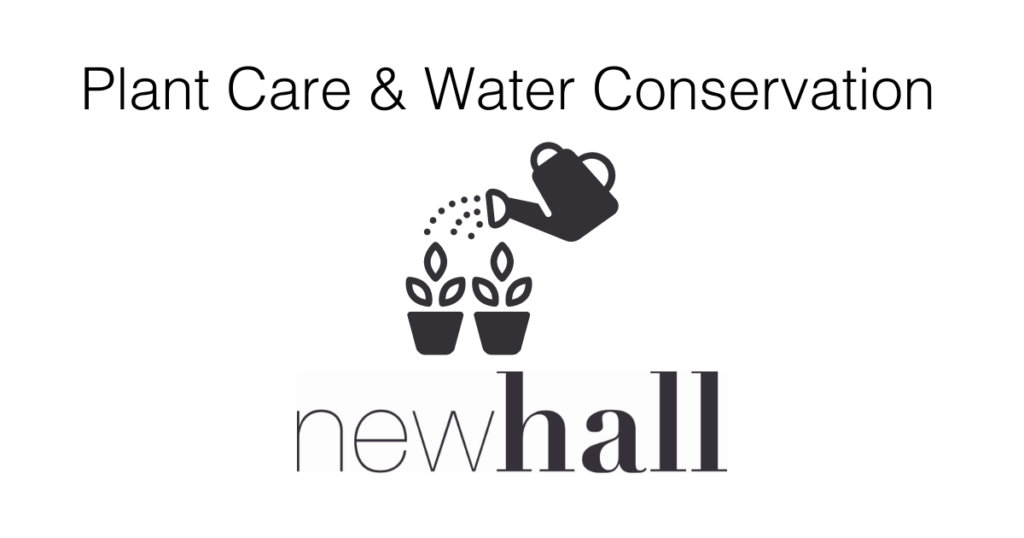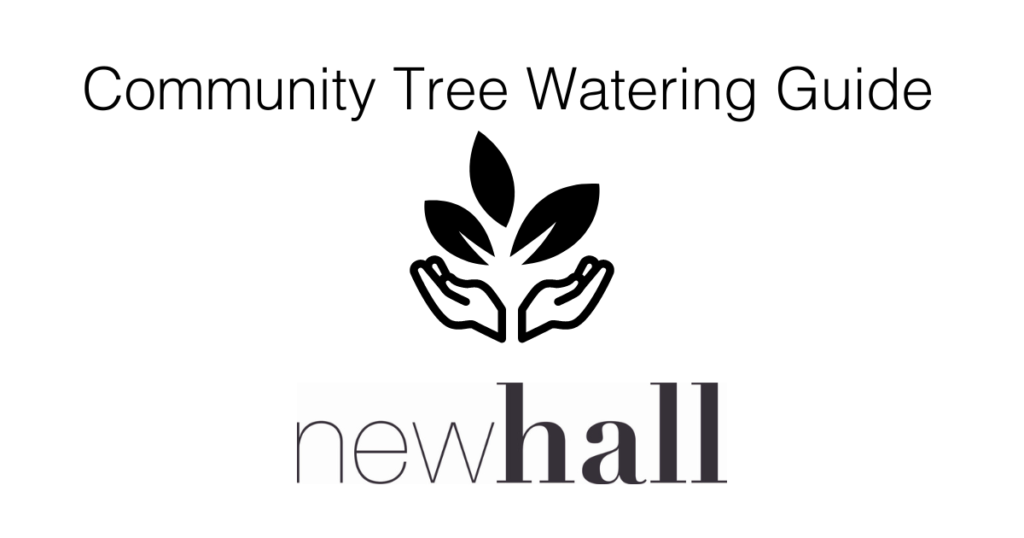Introduction
🌳🌿 The UK is no stranger to extreme weather conditions, which can pose challenges to the survival and health of our front gardens, green spaces and community trees.
From scorching heatwaves and heavy downpours to extreme snow and frost, our green spaces have borne the brunt of these conditions. This has had a big impact on the landscaping in Newhall with additional money needed to replenish planting in front gardens and communal areas.
It is essential that we provide plants and trees with sufficient water, especially during the period between May and September, which is why we are reluctant to do planting during these times. But did you know that YOU can make a positive impact on our community and environment by using waste water for watering?
It looks as if we are heading towards more extreme hot weather and so we would like to encourage the community to harness suitable waste water and contribute to the conservation of YOUR front gardens, our green spaces and trees.
🌧️💦 A Guide to identifying suitable waste water sources and the best practices for rain harvesting:
- Rainwater Harvesting: Rainwater remains an excellent source of waste water for your garden. Set up a rain barrel or a rainwater harvesting system connected to your gutters to collect rainwater that falls on your roofs.
- Greywater Recycling: Greywater, which includes lightly used water from activities like laundry, dishwashing, or bathing can be repurposed for your garden.
- Air Conditioner and Dehumidifier Condensate: Utilising the condensate produced by these unit is another way to reduce waste. Collect the water from the condensate drain pipe in a container and repurpose it for watering your front garden and community trees. Remember to let the water sit for a day to allow any chemicals to dissipate.
- Aquarium Water: If you have an aquarium, consider reusing the water when it’s time for a change. The nutrient-rich aquarium water can provide a nourishing boost to your plants.
- Paddling Pool Water: While paddling pool water can be reused, it’s crucial to ensure it is free of chlorine and other chemicals that could harm your plants. Prioritise the health of your greenery and be mindful of the water’s quality.
By incorporating suitable waste water sources, we can minimise waste and make a positive impact on our gardens and environment! 🌧️💦
💦🌿 Tips for Keeping Plants Thriving Whilst Conserving Water:
- Check the Soil Moisture: Before grabbing the watering can, take a moment to assess the moisture level of the soil. Stick your finger about an inch deep into the ground. If it feels dry, it’s time to water the plants.
- Water Deeply: When watering your outdoor plants, make sure to water deeply. This means allowing the water to reach the plant’s root system. Shallow watering can cause the roots to grow too close to the surface potentially harming the plant’s health.
- Water Early or Late: To optimise water usage and minimise evaporation, it’s best to water your plants early in the morning or late in the evening when the sun’s intensity is lower. This helps ensure the water reaches the roots effectively and reduces the risk of sunburn on the leaves.
- Avoid Waterlogging: Overwatering can lead to waterlogging, which can harm your plants by causing root rot and other issues. To prevent this, ensure the soil is well-drained and refrain from watering too frequently.
- Use the Right Amount: The watering needs of outdoor plants vary depending on factors like plant type and weather conditions. As a general rule, most plants require about an inch of water per week. However, it’s always a good idea to research the specific watering requirements of your plants to ensure they receive the appropriate amount. If you’re not sure, then please send an email to Dominic at: newhallestate@shw.co.uk.
💦🌳 An Easy Guide to Community Tree Watering in Newhall:
When it comes to ensuring the health and vitality of trees in Newhall, proper watering practices play a crucial role. To provide you with comprehensive guidance, we’ve gathered valuable information from Street Trees for Living. Here are some essential tips to help you effectively water the trees in your community:
- Watering Frequency: Newly planted trees require regular watering, especially during their first two years. In general, aim to water the tree at least once a week, providing a deep soak to reach the root zone. During hot and dry spells, it may be necessary to increase the frequency to prevent moisture stress.
- Watering Volume: For young trees, aim to provide around 25 litres of water per week during the growing season. This amount should be adjusted based on local conditions, including rainfall and soil type. As the tree grows and establishes, gradually reduce the frequency but increase the amount of water given per watering
- Watering Technique: To ensure proper water penetration, use a slow and steady watering technique. Direct the water to the base of the tree, allowing it to soak deeply into the root zone. The goal is to moisten the soil to a depth of about 30cm. This encourages the tree’s roots to grow deep, making them more resilient to drought conditions..
- Tree Watering Bags, Tree Watering Kits & Mulching: Newhall trees have a number of aids to support watering and growth, which include Tree Watering Bags and/or Kits and Mulching:
- Tree Watering Bags – You may have noticed the green bags that have been placed around newly planted trees. These are known as a Tree Watering Bags and are a device that helps efficiently water trees. It consists of a porous bag placed around the base of a tree and is filled with water. The water gradually seeps out through small holes or permeable fabric, providing a slow and consistent supply directly to the tree’s roots. To use, you simply fill the bag: Locate the designated opening or spout on the bag and fill it with water. Some bags may have a capacity indicator to guide you on the appropriate water level. Please take care NOT TO overfill the bag.
- Tree Irrigation Kit: Some of our trees have a Tree Irrigation Kit, which is a black pipe with a cap on the top and allows trees to be watered directly at the roots, aiding establishment and reducing water wastage. You simply water via the vented cap and the water will be dispersed to the root ball of the tree.
- Mulching: Alternatively some of our trees may have a layer of organic mulch around the base of the tree, which can help conserve moisture and regulate soil temperature.
- Consider Local Conditions: Please keep in mind the specific weather conditions and soil characteristics in Newhall. Adjust your watering schedule accordingly, taking into account factors like rainfall, temperature, local water restrictions, if any and direct guidance from the Newhall Landscaping Team, directly or via our social channels on Facebook or Instagram.
By following these simple tips, we can collectively contribute to the health and sustainability of our front gardens, community trees and green spaces. By utilising waste water for watering allows us to conserve precious resources, keep planting alive and healthy. Ultimately this will help in keeping our planting budget at a fair level, providing residents with value for their money.
Let’s work together to create a greener, more vibrant neighbourhood! 🌳🌿





Leave A Comment